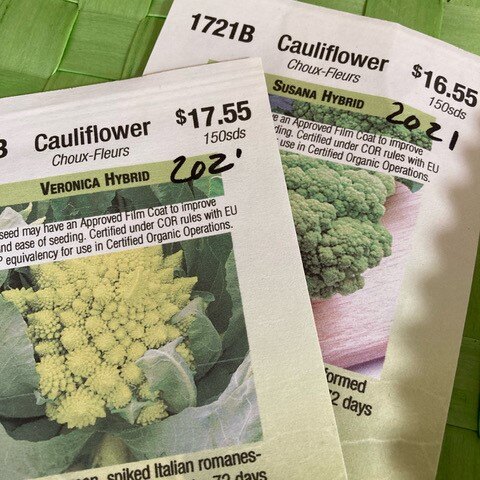Secrets to Testing Old Seeds and Growing Golden Sesame Seeds

A new crop, discovered in a seed catalogue last year, piqued my growing interest. I grow lots of vegetables but growing Sesame seeds didn’t occur to me until I saw them listed. I'm excited to try something new I ordered it right away.

New Crop Arrives Late
When the bulk of my seeds arrived the Sesame Seed was “back ordered”. This usually means trouble. Backordered seeds may never arrive or if they do, it is on a random, unknown day. So I forgot about Golden Sesame and filled my Greenhouse Garden with other crops.
By the time my back ordered seed arrived, it was too late to start it “indoors” 4-6 weeks before the last frost date. It was already spring, past the last frost date in my area and my greenhouse was already packed with plants growing in soil and flats.
So like making room in a closet after a shopping spree, I had to make room in my greenhouse to start a few more seeds. Apparently, Sesame needs heat and drought to thrive so I sprouted them in my greenhouse but planned to move them outside along the sunny south side of my greenhouse to mature.
According to my journal entry, I started Sesame seeds in trays in my greenhouse on May 3rd, 2018. The germination listed on the package was 96% so I expected the seeds to sprout and they did. I always cover new seeds with a plastic cover to help germination and within four days every seed was up.
On May 23rd, less than three weeks after seeding in the greenhouse, I transplanted the small plants from flats to soil, spacing them 15 cm. (6 inches) apart.
Old Seed: Dead of Alive?
New seed is easy to grow but are you wondering what my secret is for figuring out if older seeds are dead or alive? Some seed, like onions, can only be stored for a couple of years while others, like lettuce, live on and on. Basically, if a seed germinates it is alive and I like to figure out if seed is dead or alive before I plant it, using a quick and easy germination test.
In January, when most gardeners are seriously gathering catalogues and ordering new seed for the New Year, I start by testing leftover seed from past years. And with a greenhouse it is possible to start growing food almost any time of the year, so using old seed early allows me to get planting even when my new orders are still “in the mail.”
To discover if your seeds are dead or alive you need a piece of paper towel, a ziplock bag and a few days. Simply spread ten seeds on a moistened towel and tuck it into a labeled bag and you’ll soon discover if your seeds, kept in boxes and bags over the years, are viable. And of course you’ll save money in January organizing your boxes of old seeds and testing for germination before buying new seed.
Leaving germinating seeds on top of the fridge or any warm spot speeds germination. Some seeds, like lettuce, sprout in as little as a day. Others, like carrots or parsley take a week or two to sprout.

Keep checking and re-moisten the paper towels if they dry out before the seeds sprout. Once seed roots emerge consider them alive but keep checking. After the first roots emerge allow another two to three days to get the total germination count. Placing ten seeds on the damp towel makes the math easy. 9 seeds sprouting means 90% germination. Five seeds sprouting means 50% germination. The only difference between high and low scores is I need to use more seed in each flat if the germination percent is lower.
Open-pollinated seed makes life easy
And the best news ever? The “Golden Sesame” seed I bought is listed as OP. This means it is open pollinated and the seeds produced from the crop I grew in 2018 will be genetically the same as the ones I originally purchased. I saved some of the new seed, harvested in September, so there is plenty of Sesame to go around this year.

Keep Planting like Conor:
One commercial farmer, Conor Crickmore at Neversink Farms (zone six in New York State), seeds vegetables in his unheated greenhouse every time there is an empty row regardless of time of year. Unlike you and me he is not growing in a beautiful BC Greenhouse but he is growing under cover directly on the soil so some of his timing can be copied.
Conor’s constant seeding means he always has something to harvest from his farm ( his video at https://www.youtube.com/watch?v=WTIJyd2GgI4.) This is a lesson I have learned and employed. But I also know if the soil is cool it takes longer for seedlings to sprout so it is good to be patient if seeding on cold soil in January.

Wondering when you should be starting seeds in your area for spring planting? Check out this page to get seeding dates by your postal code.
And remember if you have a greenhouse, even an unheated greenhouse, you can get an earlier start on the season simply by seeding earlier and using your greenhouse to trap the heat, warm the soil and boost your crop. Anyone game for a stir-fry with home grown sesame seeds?
More from Donna
For more great tips from Donna, visit www.donnabalzer.com.
You can also read Donna’s gardening books: No Guff Vegetable Gardening with Steven Biggs and her just released Gardener’s Gratitude Journal: Part Diary, Part Personal Growing Guide.
.webp?width=248&height=105&name=DonnaLogo-01%20(2).webp)


